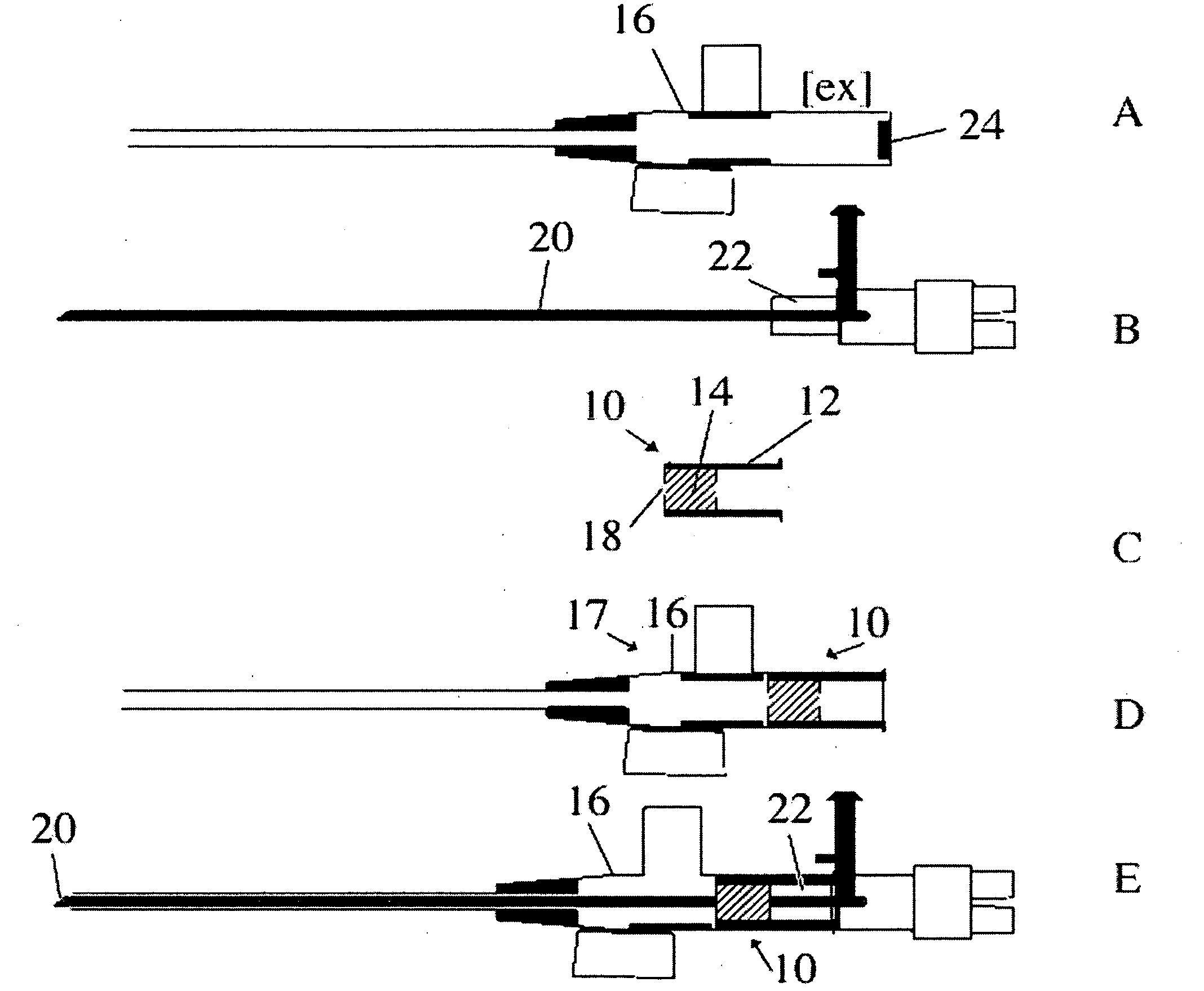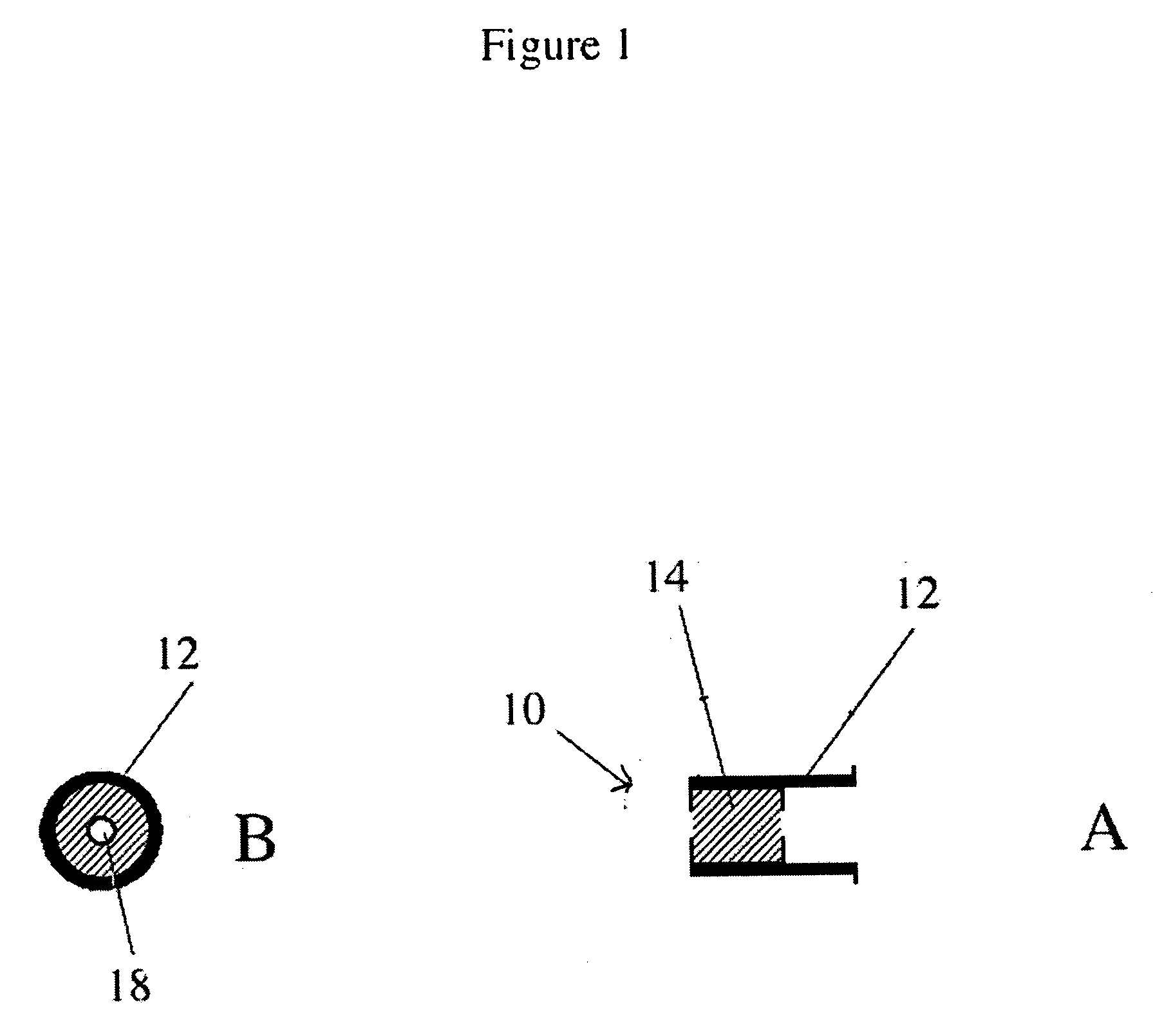Device to prevent blood leakage using intravenous catheters
a technology of intravenous catheter and device, which is applied in the direction of catheter, closure stopper, closure lid, etc., can solve the problems of blood leakage through the infusion channel of the device, blood leakage that occurs, and blood leakage substantial soiling, so as to prevent blood leakage, prevent blood leakage, and prevent blood leakage
- Summary
- Abstract
- Description
- Claims
- Application Information
AI Technical Summary
Benefits of technology
Problems solved by technology
Method used
Image
Examples
example 1
[0043] The device 10 of the invention in this example comprises a small plastic container 12, made by any means known in the art, for example, by plastic mold injection. The size of this container (“BloodLock™) depends on the specific needle for which it is to be used. Thus, for the version shown in FIG. 2 (Becton & Dickinson), it has a length of 9 mm, a diameter of 5 mm, with the forward hole having a diameter of 1.5 mm and the aft hole having a diameter of 4.5 mm.
[0044] In FIG. 2 and thereafter, various versions of the invention are shown containing a carboxymethyl saturated foam rubber stopper 14 as shown in FIG. 1. FIG. 2A showing the catheter hub 16 and infusion port of this catheter 24, FIG. 2B showing the needle 20 and needle fixation holder 22, FIG. 2C showing the device 10. As shown in FIG. 2D, in the assembly of the invention 17, the device 10 fits into the infusion port 24 of, for example, a Venflon Pro (Becton & Dickinson, Franklin Lakes, N.J. USA) or a standard type of...
PUM
 Login to View More
Login to View More Abstract
Description
Claims
Application Information
 Login to View More
Login to View More - R&D
- Intellectual Property
- Life Sciences
- Materials
- Tech Scout
- Unparalleled Data Quality
- Higher Quality Content
- 60% Fewer Hallucinations
Browse by: Latest US Patents, China's latest patents, Technical Efficacy Thesaurus, Application Domain, Technology Topic, Popular Technical Reports.
© 2025 PatSnap. All rights reserved.Legal|Privacy policy|Modern Slavery Act Transparency Statement|Sitemap|About US| Contact US: help@patsnap.com



